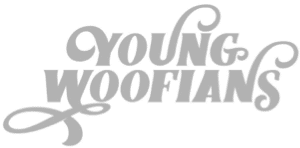Wouldn’t our lives be so much easier if we could talk to our dogs? We could discuss with them the many reasons why eating dirty socks is a bad idea, and reassure them that we’ll be back soon when we leave the house. We could also explain to them the importance of keeping up a good grooming regime. Instead we have to communicate with them in different ways, which can leave our pups wondering why they have to do certain things, and one of those things is being groomed. As we can’t explain the importance of good skin, hair, nails, teeth and eye hygiene, it’s instead our job to make our dogs feel safe and comfortable while they are experiencing the grooming routines that keep them healthy.
So how do we do that? Well if you’ve recently brought home a new puppy then you can begin your grooming prep straight away. The idea is to get your puppy used to being touched all over his body, so that when you move on to grooming he won’t be fazed. Of course just like us, all dogs have different levels of tolerance for being touched, so get to know what yours likes and doesn’t like. If you have an older dog who isn’t used to being groomed, or a dog who finds being touched difficult, then you’ll need to start the desensitisation process very slowly.
First things first, you’ll want to start off by touching your pooch calmly and gently over all parts of his body, taking care to work up slowly to any area that causes stress (feet, for example, are notoriously sensitive to dogs). With each touch or stroke, talk calmly and give lots of praise, and food rewards too if that helps (which lets face it, it usually does!). Once your pup is confident and happy to be touched all over, you can gradually introduce the grooming tools that will ultimately be used (either by you, or a professional groomer). Keep dishing out the praise and treats as you go along and take things slowly. Look out for relaxed and calm body language from your dog, and then move on to the next step. A few minutes each day should be enough to start to reinforce that touching = nice experience. You can then build up to longer grooming sessions at your dog’s own pace – don’t rush the process, patience is key.
It’s especially important for certain breeds to be regularly groomed, as grooming gets rid of dead hair and skin cells, which is important to keep dogs in tip top condition. And don’t forget the teeth and nails – for teeth, start off slowly by touching the muzzle, before moving on to gently lifting your dog’s lips and inspecting his teeth (carefully!). The goal is to work up to using a doggy toothbrush and paste, one little step at a time. For feet, begin by touching and praising, then move on to gently squeezing their nails. Once your dog tolerates this you can work towards the goal of clipping their nails.
It may seem like a slow process but it will be worth it in the end. Just remember to be patient and practice, praise, repeat!






0 Comments